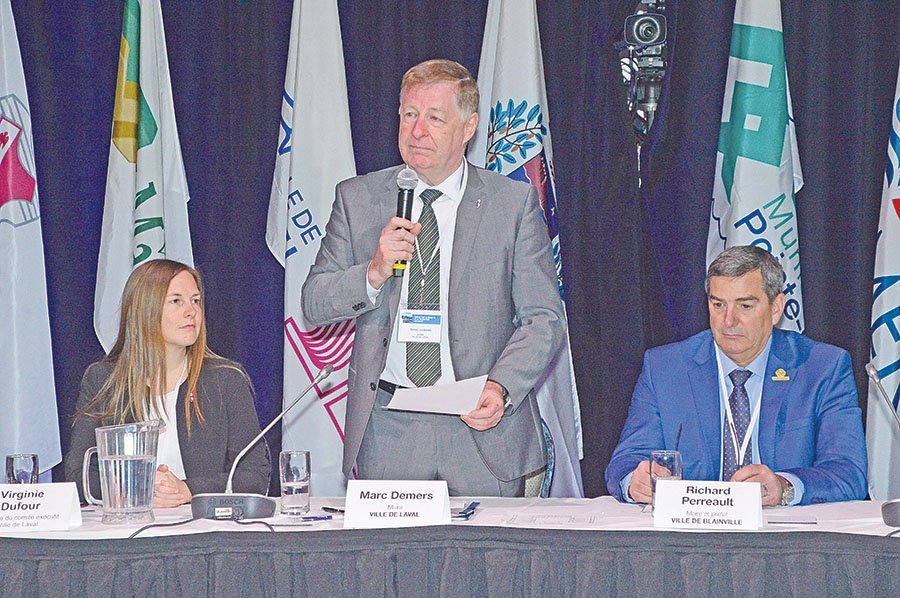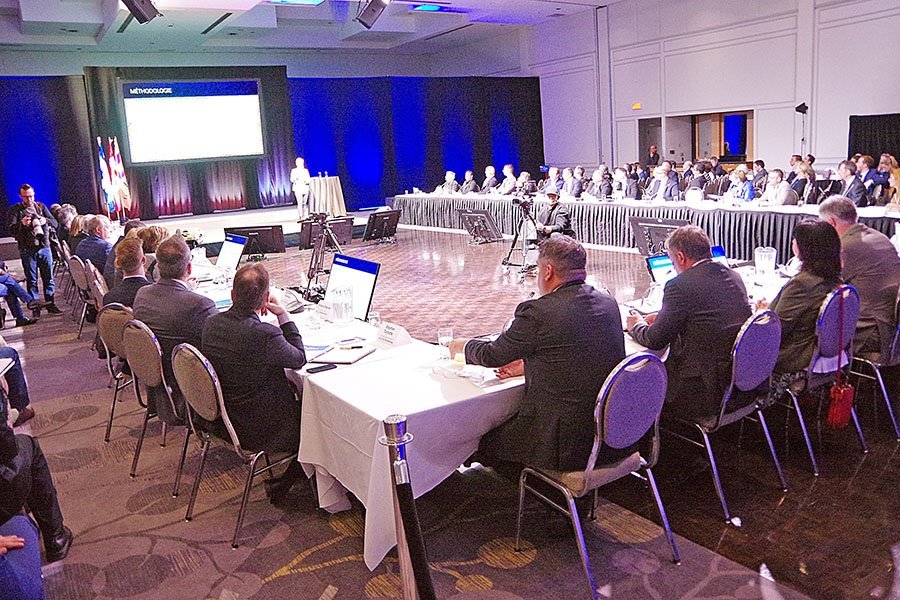
Martin C. Barry
A Forum on Mobility and Public Transport, which was held on April 23 by the City of Laval, concluded with an agreement between 19 participating municipalities that they will work together to develop an integrated public transit system in the Laval/North Shore area to reduce traffic and improve the quality of life for the region’s approximately one-million residents.
The 19 towns and cities, including Rosemère, Saint-Eustache, Deux-Montagnes, Sainte-Thérèse, Sainte-Jérôme and Terrebonne, agreed on four priorities for which they expect the provincial and federal governments to provide financial support.
Rapid transit for Chomedey
The first would be the introduction of an expanded network of dedicated and reserved public transit lanes on autoroutes 13, 15, 19 and 25, as well as on certain sections of autoroutes 440 and 640.
A second measure would be the implementation of a new rapid transit link within the densely-populated Laval district of Chomedey, whether through the addition of new Métro stations or the prolongation of the REM system now under development.

New transit agency
Thirdly, Autoroute 19 which extends northward in eastern Laval would be lengthened to reach Autoroute 640 on the North Shore. As well, Autoroute 13 would be extended northward to Autoroute 50, with dedicated lanes for public transit.
In addition to these measures, the mayors of the 19 municipalities have agreed to establish a project office for the creation of a new integrated public transit agency to serve the Laval/North Shore/Lower Laurentian areas. This office is supposed to be created by Sept. 1 this year.
Action needed quickly
“Our movement has no precedent,” Mayor Marc Demers said in his opening remarks. “We now have a need very quickly for the implementation of a project office financed by the State to pursue the work, most notably to establish the priorities and figure out the various aspects involved.”
Blainville mayor and MRC Thérèse-De Blainville chief administrator Richard Perreault said that what the mayors wished to make clear “is the urgency for the governments to consider as a whole the issue of road congestion in Laval and in the Lower Laurentians – and to act rapidly. We’re talking about one million people who are caught up in this jigsaw puzzle for numerous years, and who will remain that way in the years to come if nothing is done.”
Traffic increases forecast
According to the results of Laval/North/Shore/Lower Laurentian road traffic surveys released during the forum, traffic delays increased 46 per cent from 2014-2017, while they are projected to increase 37 per cent from now to 2021 if action isn’t taken.
The studies also found that time lost by motorists stuck in traffic jams on major roadways in the area will have risen by 100 per cent by 2021 compared to 2014. As well, the traffic jams are expected to grow larger and to continue beyond the peak hours for traffic jams we know today.
Longer waits in traffic
To put that in perspective, it is estimated that a car trip today from west end Montreal, near the southern starting point of Autoroute 13, to a municipality on the North Shore, such as Rosemère or Deux-Montagnes at the A-13’s northern terminus – which normally should take around 40 minutes – can be expected to take as long as an hour-and-a-half just a few years from now if measures aren’t enacted to deal with the growing traffic.
The surveys also found that the average motorist today who is regularly commuting from the Laval/North Shore/Lower Laurentian areas to Montreal, is spending the equivalent of two weeks per year stuck in traffic.
REM stations in Laval
Laval city councillor Gilbert Dumas, who is president of the Société de transport de Laval, said in an interview with the Laval News that the City of Laval is looking for a solution that could involve expanding the nascent REM electric train system with additional stations in strategic locations in Laval.
“We would like it to branch off into parts of Laval like along Notre Dame Blvd., Curé Labelle and other places,” he said. “I know we have to wait until the REM’s first phase is done, and then after that we’ll look to see if what we need can be done with more Métro stations or with the REM.”
The big picture on traffic
Chomedey Liberal MNA Guy Ouellette, who was one of the many provincial and federal elected officials attending the forum, noted that Premier Philippe Couillard has been making pointed suggestions lately that, following the start of work in the REM, the provincial government is willing to invest billions more in public transit infrastructure.
“It has to be part of a big plan, and not just to decongest Laval, but the North Shore also,” said Ouellette. “We have to look at this globally. The North Shore is the area where is the fastest expansion in terms of population. Since there are more and more cars we are losing more and more time. If something comes from today’s summit, it will be a global solution that takes into account areas like the Laurentians and Lanaudiére.”














